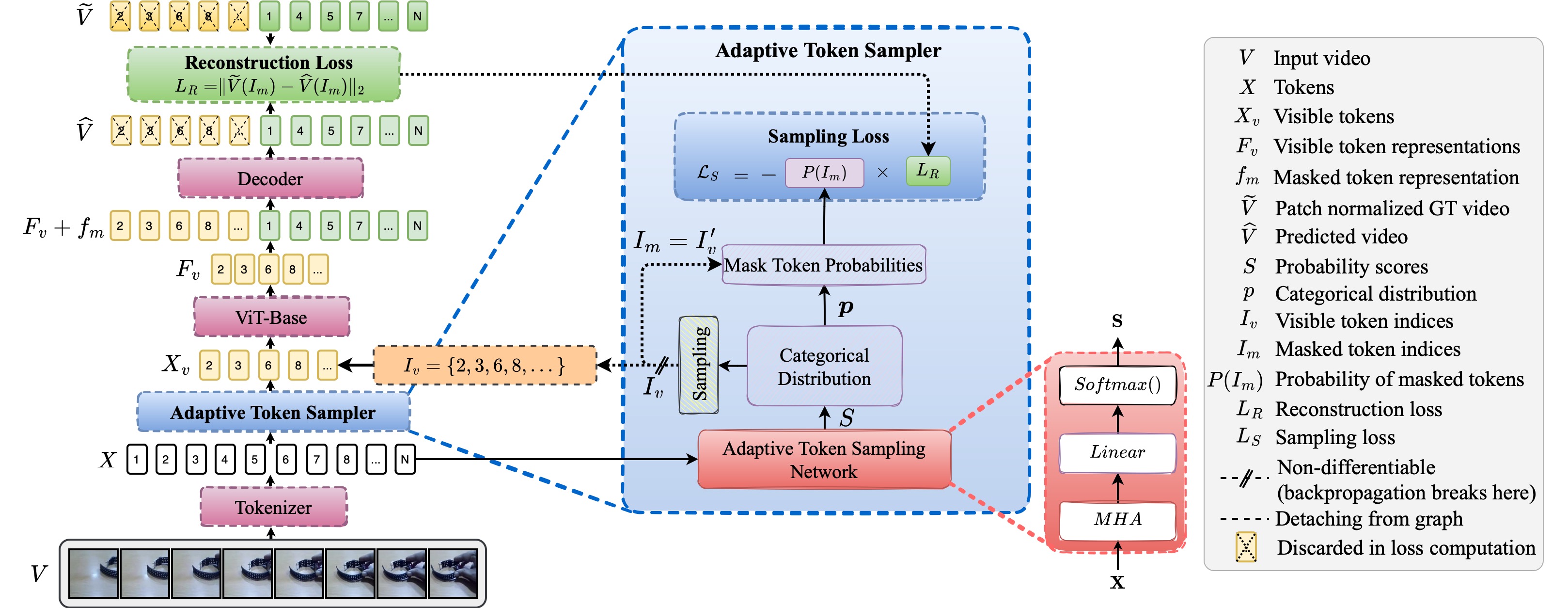AdaMAE: Adaptive Masking for Efficient Spatiotemporal Learning with Masked Autoencoders
Masked Autoencoders (MAEs) learn generalizable representations for image, text, audio, video, etc., by reconstructing masked input data from tokens of the visible data. Current MAE approaches for videos rely on random patch, tube, or frame-based masking strategies to select these tokens. This paper proposes AdaMAE, an adaptive masking strategy for MAEs that is end-to-end trainable. Our adaptive masking strategy samples visible tokens based on the semantic context using an auxiliary sampling network. This network estimates a categorical distribution over spacetime-patch tokens. The tokens that increase the expected reconstruction error are rewarded and selected as visible tokens, motivated by the policy gradient algorithm in reinforcement learning. We show that AdaMAE samples more tokens from the high spatiotemporal information regions, thereby allowing us to mask 95% of tokens, resulting in lower memory requirements and faster pre-training. We conduct ablation studies on the Something-Something v2 (SSv2) dataset to demonstrate the efficacy of our adaptive sampling approach and report state-of-the-art results of 70.0% and 81.7% in top-1 accuracy on SSv2 and Kinetics-400 action classification datasets with a ViT-Base backbone and 800 pre-training epochs.
PDF Abstract CVPR 2023 PDF CVPR 2023 Abstract





 Kinetics
Kinetics
 Kinetics 400
Kinetics 400
 Something-Something V2
Something-Something V2
